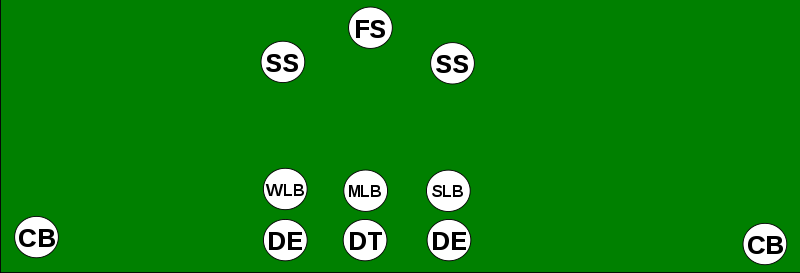
 Got an e-mail from Tony:
Got an e-mail from Tony:What is a 3-3-5 Stack defense and what are its strengths and weaknesses?
What is the difference between the stack and the plain old 3-3-5 (nickel)? With Coach R-Rod in the Big House now will this be our base defense? Can you stop the run with it?
Thank you,
Andy
CoachBt: There is little difference between 3-3 and 3-3 stack. One is just variation of the other. Only major difference is alignment. In stack you line your LB's up directly behind your D-Line, hence the name stack. In 3-3 you generally shade either your LB's or D-Line either to the strength of the offense or towards the wide side of the field.
Strength: 3-3 is a very flexible or easy to adapt defense it is also a very aggressive/attack defense. You are generally bringing either one and many times two defenders on blitzes. 3-3 is also a fast defense the five DB's and two OLB's are usually people who can run and cover ground. 3-3 also allows you to adjust easily to any multiple WR sets the offense may use. 3-3 can also be tough to zone block. Stacked LB's are protected and tough to block.
Weakness: While 3-3 is fast it is also generally a smaller defense also, and can be muscled by a team likes LSU. To work your front three need to be extremely tough against the run. Three front is also called a two gap defense. Because your front three is responsible for two gaps. This can be very difficult to execute especially against a team that is accomplished at gap blocking. Gap blocking allows you double up on the front three. Holding two gaps while being doubled is a bitch. Zone traps can be extremely effective against three fronts. Also teams that have big strong TE, or who run two TE sets can give 3-3 problems either offense will out man you at point of attack. Or, if defense rolls safety in box, TE is usually a mismatch for most safeties to handle in the running game. Can you stop the run 3-3 stack is very good against team that uses perimeter attack. That includes option, sweeps, outside zone or stretch play and most perimeter trick plays. It is not very stout against a team that runs sprint draw or other power games. It (IMO) is also vulnerable to traps and even many counters. Being two gap responsibility also makes it vulnerable to teams that run some sort of cut back or misdirection series.
Will Michigan use it I would be shocked if Michigan did use 3-3 stack as part of their overall scheme. My question is will be the base or nickel package. If rumors are true and Casteel is DC, the chances of being 3-3 base go up, but I would guess that after watching film from last year, and seeing what teams like Penn State, Wisconsin and even ND do, they put extra emphasis in some sort of defense that is stronger against power running game and teams that have strong, physical TE's and O-Lines.
The Big Ten season could be a bit of culture shock. The Big East is not for its buckle the chin straps, put hand on the ground, and move line of scrimmage philosophy.
Thanks for writing in.

No comments:
Post a Comment